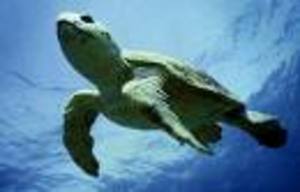Ever since I subscribed to the Smithsonian Magazine a few months ago to broaden my horizons, I have been fascinated by not only the feature length stories, but the “quick hits” sections such as their “Wild Things, Life As We Know It”. This month’s issue had a variety of great items and one was about a Loggerhead Turtle setting the record for breath holding underwater by a marine vertebrate of 10 hours which shattered the old record of 7.5 hours, also held by a fellow loggerhead turtle.
I have found out from further investigation on the web that loggerhead turtles are of the “Class Reptilla” classification, which is one of seven classifications of Marine Vertebrates overall. Florida beaches account for one third of the world’s total population of loggerheads, and the U.S. Federal government has listed the loggerhead as endangered worldwide. Lingering in cold water may actually help them survive by lowering their metabolism during the winter months.
I also learned the the “carapace” of a loggerhead turtle is their top shell and in an adult loggerhead is usually reddish-brown in color, while their “plastron”, is their bony underplate that protects their bellies and is medium-yellow in color.
Annette Broderick, of England’s University of Exeter helped record the record setting feat of 10 hours by this particular loggerhead while tracking turtle migrations in the Mediterranean Sea. Broderick said simply of the feat that “there is still so much that we don’t know about them.”
However, even though there is still so much to learn about this magnificent creature, I was able to come up with a few additional quick facts to pass along, such as the loggerhead being the most common sea turtle in Florida and is named for its large head. It has powerful jaws that can crush mollusks, crabs and encrusting animals attached to reefs and rocks.
It is estimated that 14,000 females nest in the southeastern U.S, each year, and a adult large turtle weighs between 200 to 350 pounds and measures about 3 feet in length. Hatchlings are 2 inches long and nesting in Florida occurs from late April to September.
Sadly, the survival of loggerheads in Florida is growing to be increasingly dangerous as their survival is threatened by drowning in shrimp trawls and overall habitat loss, which means simply that they have fewer safe places to nest. The loggerhead shares the same threats that menace pretty much all marine turtles, and because such a significant percentage of the world’s loggerhead population lives in Gulf and southwest Atlantic waters, shrimp fishing, gill netting, and activities associated with offshore oil and gas exploitation are particularly dangerous to this species.
I know it sounds funny, but the picture in my Smithsonian Magazine of this beautiful creature just caught my eye, and I found myself wanting to know a little bit more and found several easy to access sources to do just that. I you found my consensus of the informative interesting and informative, and I highly recommend going to my listed sources for additional information about loggerheads if this caught your fancy as well.
Reference:
- “Florida Sea Turtles” courtesy of Florida Power and Light







